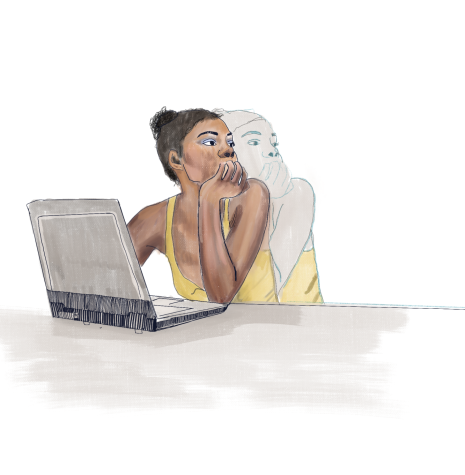On feeling out of place in the classroom
November 18, 2021
I still remember the first day when I arrived here at Whitman. As soon as I made it to campus, I walked into Cleveland to get something to eat after a long, stressful flight. I entered and looked around, seeing so many students around for the first time in a while. I suddenly felt dislocated. At that moment, I realized that I am no longer part of the majority here, as an Asian and international student.
Have you ever walked into a classroom and realized that you are the only student of color in the room? Or the only non-American student? Some of the readers might have experienced similar situations, but given the demographic of this college and community, I assume many might have not.

It is an unsettling sensation. Especially because I come from a country that is less racially diverse, I notice how comforting it is to be in a community as part of the majority. Contrasting that to here at Whitman, the discomfort of being a minority is striking. I am more aware of how I express myself, how I position myself against the majority.
Sometimes I can take pride in the identities that I bear. But there are also times when I cannot, when I feel discomfort in my own skin. Such moments, I think, are when the majority have not even the slightest awareness of their status as the majority and how it inevitably dominates the space. Nor are they conscious of the presence of the minority in the same space.
Having lived as part of the majority in many ways in my home country, I understand how easy it is to become absorbed in the comfort we enjoy when we are part of the majority. It is so comfortable that you do not even think about the fact that you are the majority. But that comfort could mean more discomfort toward the minorities.
There are also many ways the majority can get out of that comfort zone, if they make that effort. But making that effort requires so much attention to yourself and your surroundings. The college tends to advertise its community of racial and ethnic minorities, but the admin’s effort alone is not going to achieve whatever “inclusivity” they aim for if the students themselves are not making the effort. We cannot just leave the college to solve the diversity problem this place is facing.
It is so easy to blame the problem on larger systems and institutions. But everyday experiences involve smaller, intimate relationships between individuals. If we want to make our college really open and comfortable for everyone, then we have to make an individual effort to change the culture of our predominantly white institution.
I also am part of the majority in many other different ways, and I must not forget that. The subtle comments and assumptions I made unconsciously could put others in an uncomfortable position.
Having experienced being both as majority and minority in different contexts, what I can say is that the more comfortable you are, the more aware you need to be for others’ comfort too. When you walk in the classroom and do not feel the discomfort that you are the only one in there somehow, it might be worthwhile to take a step back and take into consideration how some other students might be feeling in that same space.






another international student • Dec 5, 2021 at 10:25 pm
Hi Nana, what a valuable voice. I appreciate your story. For most of my classes (mostly humanities classes) starting from my first year, I would look at my notebook or assigned text for the entire class and rarely look up at anyone’s face.
The best time I ever had at Whitman was when I lived in the writing house with four American young ladies. I had the best RA in the world, who always included me, at the same time she acknowledged our cultural differences.
Leadership is very important in a small community. A peer leader usually defines the undertone of a close-knit community.